Speak Your Retail Customers’ Language Using Google Ads: “What Are My Customers Searching For Online?”
- Marketing Strategy
- PPC: Paid Advertising

Many retail business owners focus on their brand voice and what they want to share about their business in their paid Google ads. Few business owners, however, optimize this wording to be what their customers are actually searching for on Google.
Neglecting to understand this intent can be devastating to your marketing because you’ll waste your ad money by paying for clicks of people who aren’t looking to buy right now. So, how do you understand your customers’ intent to meet their needs effectively?
In this blog post, we’ll learn how to speak your customers’ language using Google Ads and identify practical market research tips to effectively meet your users’ intent.
Optimizing For User Intent Is Essential
What Is User Intent?
User intent is essentially the meaning, or purpose, of the user’s search – why are they searching for that? What do they expect to see in the Google search results?
A big part of understanding your users’ intent is understanding where they’re at in the marketing funnel. Are they ready to buy the item right now, or are they just looking for more information? The top three stages of the marketing funnel are what we’ll focus on in this blog post: awareness, consideration, and conversion.
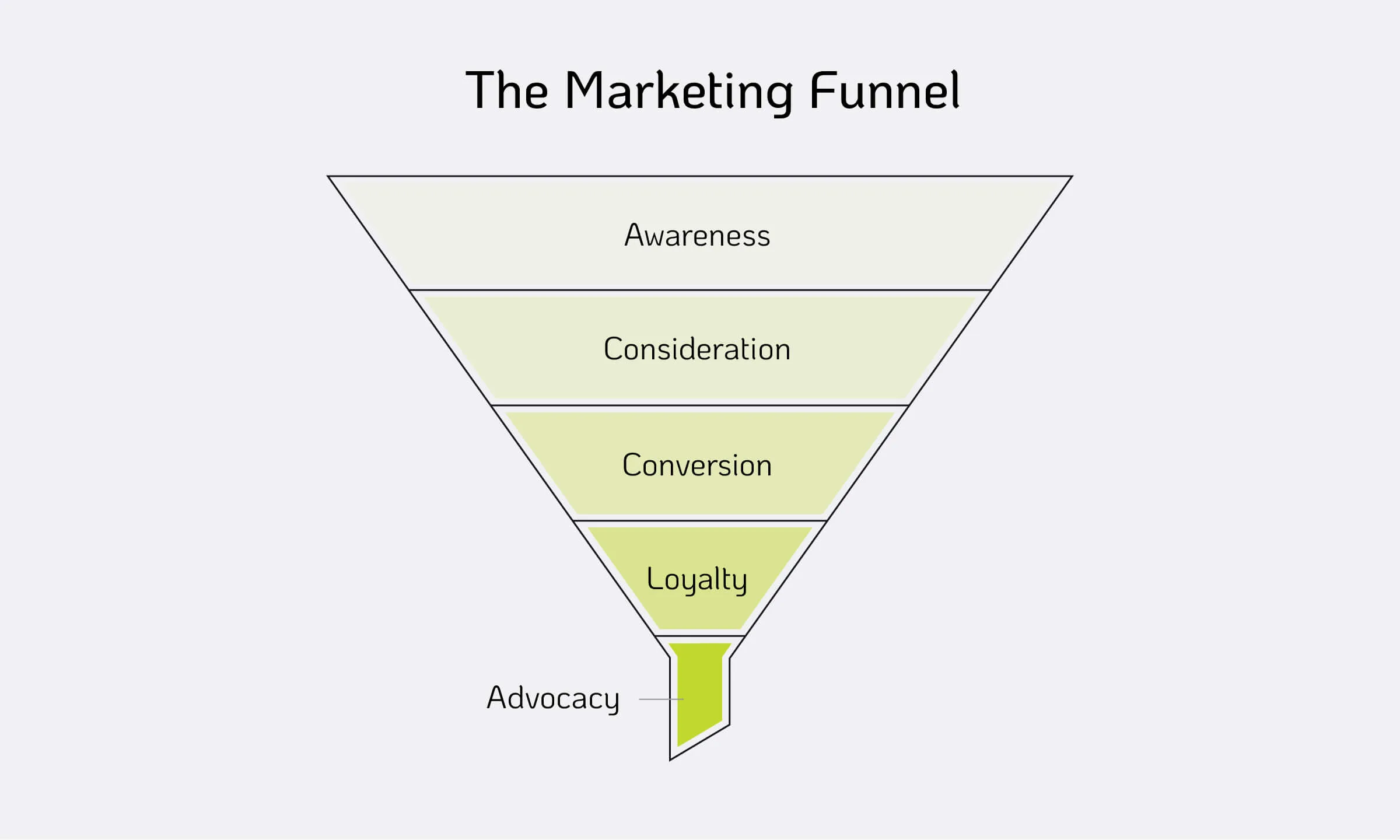
Here’s how the marketing funnel works:
- Awareness – The customer is just getting to learn about your brand, products, and what you do. They aren’t ready to buy yet; they’re just learning.
- Consideration – In this stage, the customer may be asking questions or comparing products or brands.
- Conversion – This is when a customer actually buys a product or service.
Each of these sections of the marketing funnel correlate to one of the main categories of search intent, which we’ll get into next.
Categories Of Search Intent
What was the last thing you Googled? Were you asking a question? Looking for an image or a funny video? Trying to buy something?
Chances are, your search query (a.k.a. the word or phrase you typed into the search bar) falls into one of the following categories of intent:
- Informational: The user is looking for information to answer a question.
- i.e. “How to make chocolate cream pie;” “Is it supposed to rain today?”
- Commercial: The user may be looking to buy something soon, but isn’t quite ready yet.
- i.e. “Best toys for children;” “Nike shoes vs. New Balance shoes”
- Transactional: The user is ready to buy and that’s a clear purpose of their search.
- i.e. “Coffee makers for sale;” “Where can I buy Legos?”
If your business goal is to sell a product, you’re going to want to optimize your product pages for more of the commercial/transactional intent searches, since those customers are specifically looking to buy something.
However, if your business goal is to establish yourself as an authority in your field, you might optimize your blog posts for informational searches. By answering their questions, you can position your brand as credible, knowledgeable, and helpful.
Why Is User Intent Important To My Business?
Let’s look at a practical example of this: If you are a retail business that sells professional clothing (blazers, tailored suits, etc.), you could waste a lot of money trying to rank your product pages in Google search results for phrases like, “what is considered business professional attire?” or “how to tailor a suit.” While these are relevant to what your business offers, users who are searching for these aren’t ready to buy yet. Their intent is informational, and they just want an answer to their question.
Someone searching for “black blazers for sale” or “tailored suits near me,” however, is ready to buy and looking specifically for that item at this exact time. Their intent is transactional. Focus on optimizing your product page ads for transactional intent to ensure you’re not wasting your ad money on people who aren’t ready to buy yet.
Using Google’s Natural Language API
Understanding user intent is so important that even the search engines are trying to do it! One way that Google discovers user intent is by using its Natural Language API to uncover the true meaning of a word or phrase. Try using it with a few sentences that are related to your business!

How To Understand Consumer Preferences In Google Searches: Be The Solution They’re Searching For
What Are Consumer Preferences?
Consumer preferences are the user’s choices and opinions that influence what they search for in Google (color, size, style, brand, etc.). Consumer preferences can be hard to understand because when users go to type an item into the Google search bar, they might refine their search several times before identifying what they’re looking for. That’s why just simply looking at the search queries can be misleading.
Example Of A Consumer Preference
A user types in the following search queries, each time refining their search to be more specific in order to find what they’re looking for:
- Water Bottle
- Reusable Water Bottle
- Reusable Water Bottle For Women
- Reusable Sports Water Bottle For Women
- Light Blue Reusable Sports Water Bottle For Women
With the first search query of “water bottle,” we weren’t sure exactly what kind of water bottle they were looking for or what their preferences were, which is why it can be challenging at times to understand consumer preferences.
Why Are Consumer Preferences Important To Understand For My Business?
Consumer preferences are important to understand because they lay the foundation for the creation of your ads, helping you relate more to your users and meet their needs more accurately.
How To Identify Consumer Preferences Online
It will benefit you more to choose keywords that are very specific, such as the final search in the example above (“Light Blue Reusable Sports Water Bottle For Women”).
This is because there will be a lot of competition for a generic term like “water bottle” and you may be spending money for clicks of people who are searching for cases of plastic water bottles or any other type of water bottle, rather than a specific, reusable one. By choosing specific keywords that have less competition (known as long-tail keywords), your business will benefit because you will have a greater chance of being exactly what your customer is looking for.
If users aren’t interacting with your Google ads, it doesn’t necessarily mean people aren’t interested; you might just not be using the correct language.
For example, if you’re creating ads for the real estate field, are customers searching for the words “house,” “residence,” “apartment,” “home,” or something else? Do they use any abbreviations? Are you targeting an audience in another part of the world who may refer to an apartment as a “flat?” All of these are important factors to consider when optimizing your ads to be sure you’re using the terms they’re using.
Why Are My Customers Searching For This?
In addition to understanding the exact words your customers are using, you should also understand why they’re searching for it. Is it something they need, or just simply an item they want? Identifying their needs and wants can help you understand what other topics they might be interested in regarding that item.
Putting It Into Practice: Practical Tools For Easy Market Research
Market Research is an essential part of understanding your customers and speaking their language. Some of the benefits include:
- More specific targeting of the correct users who are ready to buy.
- A higher click-through rate for your ads, because it’s relevant to what they’re searching for.
- More relevant traffic to your site, which could lead to more people buying your products.
Failing to do accurate research can cause your business to waste money showing irrelevant ads to people who are searching for something completely different.
Using Google Autocomplete for Market Research:
Start typing one of the products or services your business offers into the search bar of Google and see a list of the suggested searches that pop up (this feature is called “Google Autocomplete”). Then, use this language/wording in your ads. This is a quick and easy way to ensure you’re speaking your customers’ language.
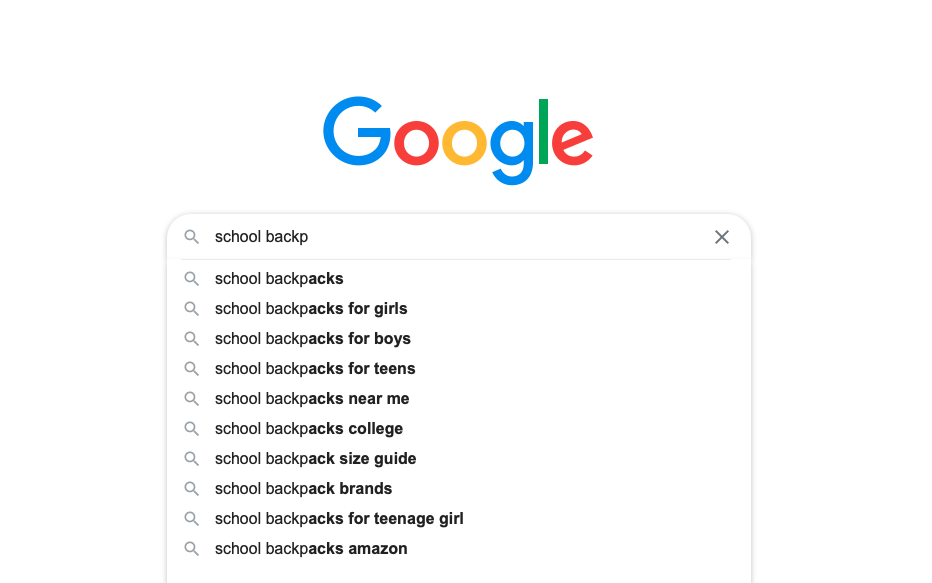
Using Google Trends For Market Research:
Another helpful tool to understand user preferences is called “Google Trends.”
This tool will give you insights into what users search for. Simply enter a topic into the search bar and you’ll see specific data such as:
- Location
- Category
- A graph of the keyword’s search volume over a specific time frame
You can narrow down your search even further by indicating:
- Image search
- News Search
- Web Search
- Google Shopping
- Youtube Search
Explore related topics/search queries and compare the data to the past year (or several years) to identify searches that consistently do well, not just ones that perform well during certain times of the year.
Let’s put this tool into practice with an example: Engagement Rings (white, rose, and yellow gold). Are most people searching for a classic yellow gold engagement ring, or do they prefer a more trendy color like rose gold?
As you can see in the screenshot below, I’ve compared white, rose, and yellow gold engagement ring search queries from 2004-2021. You can see that the number of searches for “rose gold engagement ring” has massively increased within the past few years. This proves Google Trends can give you valuable insights into what your specific customers are searching for and how your business can adapt to those preferences.
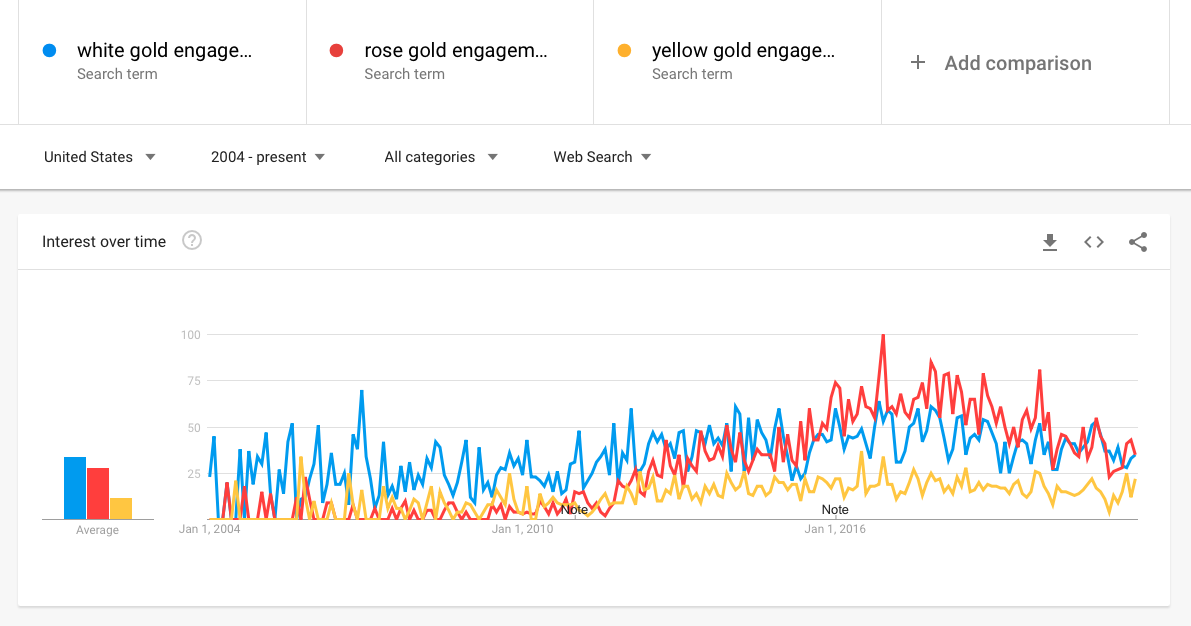
Examples Of Businesses Understanding Their Customers Well
- L.L.Bean – High School Backpacks: The first thing that Google Autocomplete recommends when you type “best school backpacks for” is “best school backpacks for high school.” Although L.L.Bean has only one high school backpack style on their website, their ad is the top choice on Google for this search. They even crafted their ad to match this search by saying, “High School Backpacks | School Backpacks at L.L.Bean.” This is a great example of recognizing what users are searching for and then adapting your ads to fit it.
- The Hershey Company – Reese’s Big Cup With Potato Chips: The recent development of this new product was a result of their market research with their customers, finding a trend in people desiring a mid-morning snack that was more substantial than a candy bar. To respond to this customer desire, Hershey developed a Snack Cake in 2020, and will soon release a Reese’s cup with potato chips. According to Food Business News, Hershey is “constantly researching and staying in touch with consumers.” This understanding of their customers’ needs and wants has allowed them to stay on top of trends and create products and ads that align with their customers’ desires.
- American Eagle Outfitters – Trends of jeans: As you can see in the screenshot from Google Trends, there has been a huge increase in searches within the past few years of “mom jeans.” American Eagle has seen this trend and has adapted to it by having a specific section on their website for “mom jeans” and by using this term in their ads.
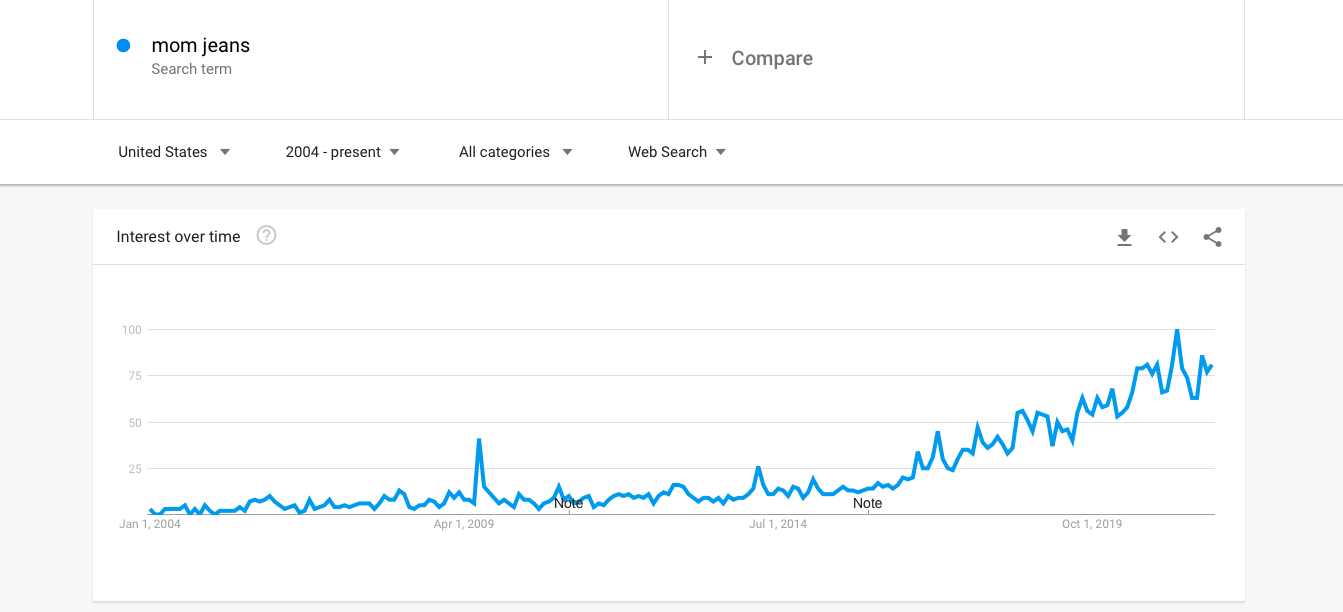
Examples Of Businesses NOT Understanding Their Customers Well
- Bolthouse Farms Baby Carrots: The other day, I was at the grocery store looking to buy sweet potatoes, and I picked up a bag of orange vegetables that I thought said “sweet potatoes.” After taking a second look, however, I saw that it was actually a bag of carrots that said, “sweet petites.”
If this were to have happened in a Google Search, the customer wouldn’t know to type in “sweet petites” when looking for carrots, and therefore, the company would not be meeting the needs of their customers.
This is a great example of misunderstanding what customers are looking for. Be clear and straightforward in your ads and tell users exactly what they’re going to get. Imagine how disappointed customers will be if they go to make a recipe that calls for sweet potatoes and they realize they actually bought carrots instead!
- Lenovo: When doing a very generic search in Google for “mouse,” immediately I see a lot of Lenovo computer mice for sale. My intent in searching for that might just have been to see a picture of an animal, but it was hard for Google to understand my intent behind that. It would have been better for Lenovo to focus on a long-tail keyword, such as “Lenovo wireless computer mouse.”
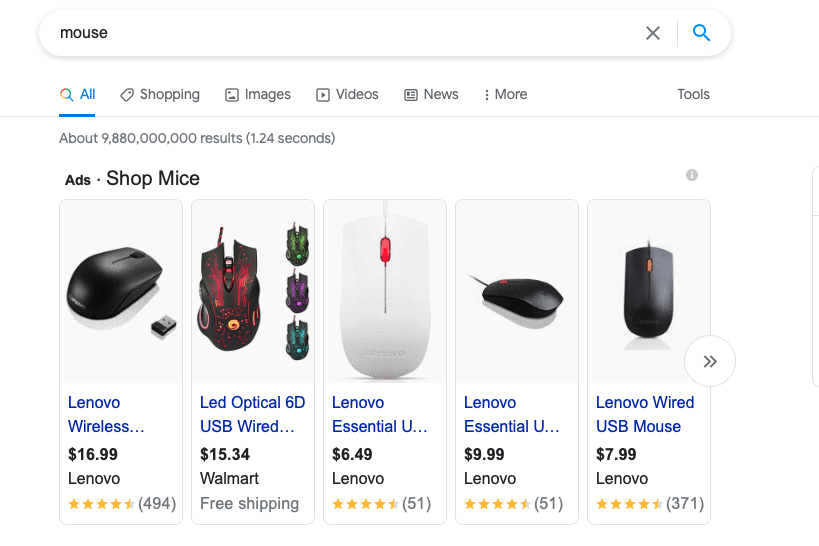
- Amazon: When I type “what is a gardening spade” into Google, I am in the informational category of intent. I’m not looking to buy anything, I am just looking for a description of a gardening spade. However, the first result that comes up shows a 5-piece gardening set for sale on Amazon. Amazon would benefit more by showing that ad to someone searching for “gardening tools for sale” because they would be in the transactional category of intent.

Conclusion: How Can I Implement User Intent, Consumer Preferences, And Market Research For My Business?
As a retail business owner, you have an obligation to stay on top of what your target audience is searching for in order to meet their needs effectively with Google Ads. Without this knowledge, your advertising dollars will be wasted because you’ll be targeting the wrong audience, at the wrong stage of the marketing funnel, with the wrong ads.
Steps for Getting Started
To reiterate, here are some practical steps that will help you speak your customers’ language and understand them better:
- Evaluate your intent and make sure it aligns with your customers’ intent.
- Where are your customers in terms of the marketing funnel (awareness, consideration, conversion)?
- Which category of intent (informational, commercial, or transactional) are they indicating in their searches?
- Use Google’s Natural Language API to evaluate the semantics behind the words you’re using on your website and in your ads.
- Address your user’s preferences using long-tail keywords when possible.
- Perform market research to understand how to speak your customers’ language.
- Type products into Google to see what Google Autocomplete suggests.
- Use Google Trends to identify opportunities for your marketing.
- Create ads that meet your customers’ needs and help them find exactly what they’re looking for.
Additional Resources
Need some extra help? Here are some additional resources that can help you understand how to meet your customers’ needs better using Google Ads:
- Check out SEMrush for a complete guide to using Google Trends for keyword research.
- Tower Marketing has a great resource for identifying your target audience using Google Ads through market research, segmentation, and other data resources.
- HubSpot has a useful guide/template to do market research.
For additional help or questions, contact a Tower Marketing professional to elevate your marketing strategy and achieve your business goals.
 By Lauren
By Lauren  Sierra
Sierra  Alex S
Alex S